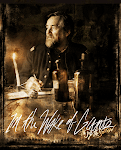 Old Times There Are Not Forgotten: An Overview of Music of the Civil War Era, Bruce C. Kelly, pp. 1-36 in Bugle Resounding: Music And Musicians Of The Civil War Era, Bruce C. Kelley and Mark A. Snell, editors, University of Missouri Press, 260 pp., illustrations, index, notes, 2004, $44.00.
Old Times There Are Not Forgotten: An Overview of Music of the Civil War Era, Bruce C. Kelly, pp. 1-36 in Bugle Resounding: Music And Musicians Of The Civil War Era, Bruce C. Kelley and Mark A. Snell, editors, University of Missouri Press, 260 pp., illustrations, index, notes, 2004, $44.00.Music was an essential element of American culture during the Civil War era. The impact of the war upon public, social music, theatre, concerts, and church music was felt dramatically in the South as the battlefront neared major cities. New Orleans and Nashville fell to the North in April 1862, Vicksburg and Chattanooga in 1863, Atlanta and Mobile in 1864. In these urban centers, theatre and concerts were curtailed during the attacks and afterward for a variety of reasons. Federal military music and concerts by military bands were generally the only notes struck after the occupation. Cities that passed through the war without suffering damage, Houston and Kansas City, received refugees and a surge in musical activities. Women composers on both sides of the Mason-Dixon Line garnered success with patriotic songs and polkas. Both Sanitary Commission and Christian Commission fairs held dances which required event specific compositions that were either sung by choruses or performed by bands and orchestras.
African-American music and musicians continued to thrive in workplaces and churches. The first publication of slave songs appeared in 1861. By 1867 collections of these songs began to appear. The war and emancipation provided great opportunities for black musicians who continued their traditional roles as repositories of work, faith and folk culture. In the camp life of Black soldiers slave plantation music met Northern urban music. Kelley cites several scholarly works that focus on sinful and spiritual tunes in Black folk music. White transcriptionists attempted to faithfully notate traditional black music but were stymied by the vocal techniques used by slaves with a variety of Dixie-Afro dialects. At times white transcribers transferred into the music their own attitudes about life, work, faith and black identity.
 Military bands were organized by regiment early in the war but quickly migrated into brigade and division bands. Some regimental bands, such as the 14th Connecticut, were so good, were called upon to play as the units advanced or retreated. Kelley cites the work of this Connecticut band during the retreat in the face of Jackson's assault at Chancellorsville. The band's performance was such that the 14th Connecticut's brigade rallied on the band as it played. R.E. Lee stated in 1864 that he did not believe an army could exist without music. Several histories of Civil War military music have been written and several histories of regimental and brigade bands now exist. Accounts of bands surrendering at Appomattox, passing through four years of war, and continuing as they return to their local communities are in the literature. Technical innovations in instrument construction and instruction marked the war. Kelly cites the 1860 census as reporting that 21,000 pianofortes were manufactured and probably 30 a day were sold through the Union before secession. The banjo moved from artisan workshops to industrial production. There was a surge in amateur education through book instruction for stringed instruments and drums.
Military bands were organized by regiment early in the war but quickly migrated into brigade and division bands. Some regimental bands, such as the 14th Connecticut, were so good, were called upon to play as the units advanced or retreated. Kelley cites the work of this Connecticut band during the retreat in the face of Jackson's assault at Chancellorsville. The band's performance was such that the 14th Connecticut's brigade rallied on the band as it played. R.E. Lee stated in 1864 that he did not believe an army could exist without music. Several histories of Civil War military music have been written and several histories of regimental and brigade bands now exist. Accounts of bands surrendering at Appomattox, passing through four years of war, and continuing as they return to their local communities are in the literature. Technical innovations in instrument construction and instruction marked the war. Kelly cites the 1860 census as reporting that 21,000 pianofortes were manufactured and probably 30 a day were sold through the Union before secession. The banjo moved from artisan workshops to industrial production. There was a surge in amateur education through book instruction for stringed instruments and drums. Sheet music production existed in most major cities before the war and only slowed in the South as paper became expensive and scarce. The collection of wartime sheet music, songsters, and song books by wealthy families became a trend and many of these collections now reside in academic libraries. Kelly agrees with other researchers that the Civil War was a laboratory for musicians, composers and entertainment promoters, not unlike it was a laboratory for medicine, communication, railroads, manufacturing and banking.
Top Image Source: Getty Images
Second Image Source: 3rd Michigan band, Corbis Images


No comments:
Post a Comment